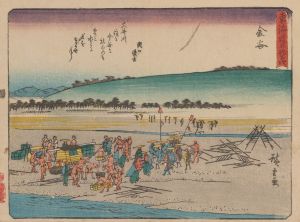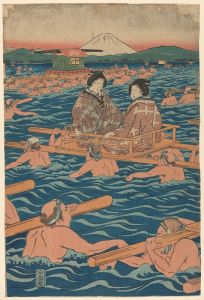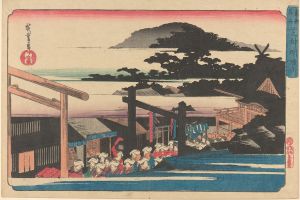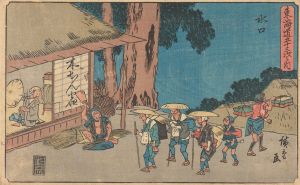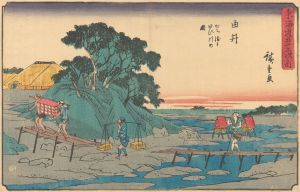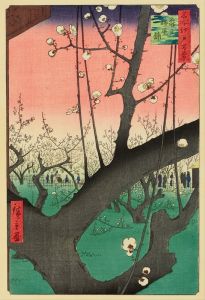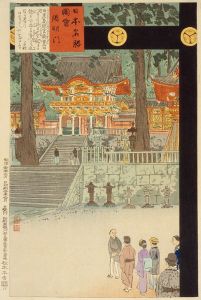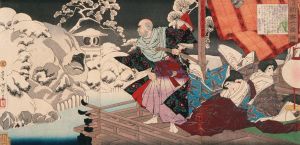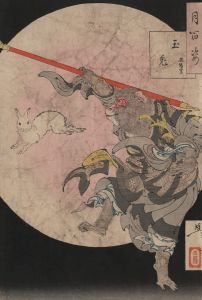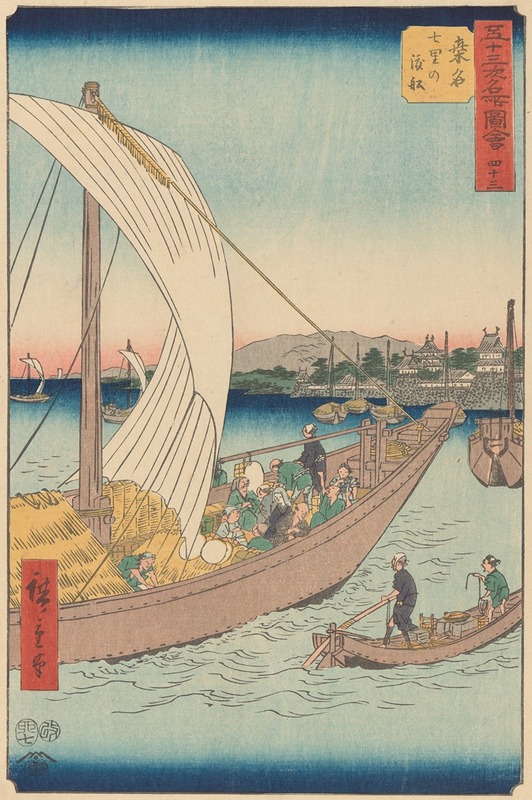
Kuwana
A hand-painted replica of Andō Hiroshige’s masterpiece Kuwana, meticulously crafted by professional artists to capture the true essence of the original. Each piece is created with museum-quality canvas and rare mineral pigments, carefully painted by experienced artists with delicate brushstrokes and rich, layered colors to perfectly recreate the texture of the original artwork. Unlike machine-printed reproductions, this hand-painted version brings the painting to life, infused with the artist’s emotions and skill in every stroke. Whether for personal collection or home decoration, it instantly elevates the artistic atmosphere of any space.
Andō Hiroshige, a renowned Japanese ukiyo-e artist of the Edo period, is celebrated for his landscape prints and his ability to capture the essence of Japan's natural beauty. One of his notable works is "Kuwana," which is part of his famous series "The Fifty-three Stations of the Tōkaidō." This series, created between 1833 and 1834, depicts the various post stations along the Tōkaidō road, a vital route connecting Edo (modern-day Tokyo) with Kyoto.
"Kuwana" is the forty-second station in the series and is known for its depiction of the Kuwana-juku, a post town located in present-day Kuwana City, Mie Prefecture. This town was an important stop along the Tōkaidō due to its strategic location near the mouth of the Ibi River, which travelers had to cross by boat. The print captures the essence of travel during the Edo period, highlighting the interaction between nature and human activity.
In Hiroshige's "Kuwana," the viewer is presented with a scene that features boats navigating the waters, with passengers and goods being transported across the river. The composition is dynamic, with the boats and figures creating a sense of movement and activity. The background often includes a view of the distant mountains, adding depth and context to the scene. Hiroshige's use of color and line work is meticulous, capturing the subtleties of the landscape and the atmosphere of the region.
The Tōkaidō series, including "Kuwana," was highly influential and popular during Hiroshige's time. It provided a visual travelogue for those who could not journey along the road themselves, offering a glimpse into the diverse landscapes and cultural landmarks of Japan. Hiroshige's ability to convey the mood and character of each location made the series a significant contribution to the ukiyo-e genre and Japanese art as a whole.
Hiroshige's work is characterized by its attention to detail and its ability to evoke a sense of place. In "Kuwana," as in many of his prints, he employs a harmonious balance between the natural environment and human presence. This balance is achieved through his careful composition and his use of perspective, which guides the viewer's eye through the scene.
The "Fifty-three Stations of the Tōkaidō" series, including "Kuwana," has been widely studied and appreciated for its artistic and historical value. It offers insights into the travel culture of the Edo period and the significance of the Tōkaidō road in connecting different regions of Japan. Hiroshige's work continues to be celebrated for its beauty and its ability to capture the spirit of a bygone era.
Today, Hiroshige's prints, including "Kuwana," are held in high esteem by art historians and collectors. They are featured in numerous exhibitions and collections worldwide, allowing audiences to appreciate the skill and artistry of one of Japan's most famous ukiyo-e masters. Through his work, Hiroshige has left an enduring legacy that continues to inspire and captivate viewers with its timeless depiction of Japan's landscapes and cultural heritage.






